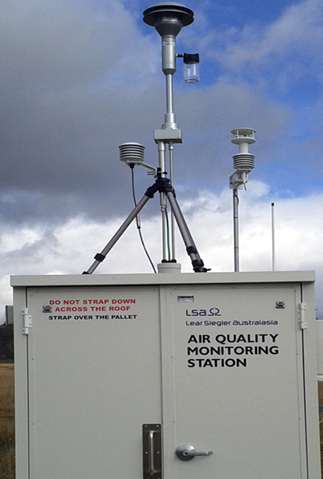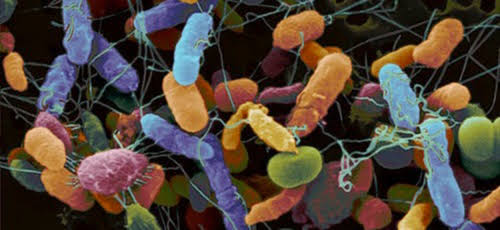Air quality is defined as the degree to which the ambient air in a particular environment is pollution-free. It is a measurement of the amount of contaminants in the air; and it gives a description of the healthiness and safety of the atmosphere of a given area at a given time. The quality of air in any environment could be regarded as being good and free from pollution or contamination (inclusive of biological, physical and chemical contaminants) when it has been assessed by measuring a number of indicators of pollution such as the presence or absence of contaminating microbes (e.g. moulds and bacteria). The air is inundated with innumerable microorganisms including spoilage organisms, pathogens and spores of microbes that find their way into factories, clean areas and in the manufacturing areas of drugs and other products where they cause economic damage.
The monitoring of the quality of air in a pharmaceutical production company or industry is critical to the production of products with standard quality. Thus, clean air standards should be a top priority for all manufacturing industries – since it helps to ensure the safety and comfort of workers in commercial and industrial environments as well as ensure the provision of sterile environments for the production of quality products. Bad air could be a major source of microbial contamination in manufacturing industries. All the clean rooms or sterile areas in such organizations should be monitored from time to time in order to ensure that the quality of air in these environments is devoid of microbes capable of causing any form of contamination or spoilage of finished products and other raw materials.
Airborne bacterial and fungal cells and even their spores may be present in droplets as bioaerosols, and as very small particles that stay suspended for long periods in the air. These microbial spores can also be suspended in the air as larger clumps and aggregates that settle rapidly onto manufacturing surfaces – from where they can cause contamination of the finished products. Airborne bacterial and fungal spores can also be an important source of contamination and infection in medical facilities. These organisms can also contaminate sensitive manufacturing operations, equipment and other instruments involved in the manufacturing processes. It is noteworthy that these microbes thrive in these environments especially in facilities where biopharmaceuticals and other medical devices are manufactured because the organization failed to imbibe the practice of regular monitoring of the air entering their facility – so that airborne microbes could be detected and kept at bay.
The microbiological monitoring of the air in facilities where biopharmaceuticals, food and medical devices are produced is essential for the total success of any manufacturing process. This is important because if these microbes find their way into these products, the finished products could serve as routes (fomites) via which infectious disease agents can spread from person to person and from place to place. Microorganisms (including spoilage microbes and pathogens) are ubiquitous; and thus environmental monitoring techniques in manufacturing areas should be instituted and imbibed in order to keep these organisms at bay. Such environmental monitoring of the quality of air should include the use of active air monitoring techniques such as air settling or contact culture media plates and other equipment that help to filter the air entering the clean areas.
There are commercially available air monitoring instruments/equipment that detect and monitor a variety of gases, chemicals, and particulates in ambient air especially in the environmental and even in industries. These air monitoring equipment/instruments incorporates photoionization detectors (PIDs), flame ionization detectors (FIDs), single-gas meters, and multi-gas detectors – that help researchers to monitor in real-time the quality of air in a particular environment (Figure 1).

The amount of pollution in air can be measured in several ways either passively or actively. In passive monitoring of air quality, tubes known as diffusion tubes are usually used to absorb a specific amount of pollutant from ambient air in the outdoor environment. These diffusion tubes (which are usually monitored for about 2 to 4 weeks) are later sent to the laboratory for physicochemical and microbiological analysis in order to determine the level of contamination in the sampled air.
Active air sampling techniques makes use of instruments/equipment that pulls ambient air across series of filters over a certain period of time. These filters are later sent to the laboratory for analysis as aforementioned to determine the level of contamination in the air. Some countries have well established regulatory requirements and internationally recognized standards for biocontamination control in clean rooms and other controlled environments in hospitals, food factories and pharmaceutical companies. And it is required that factories and industries involved in the production of food and other materials or products that are ingestible by man and animals imbibe and follow these standards in order to ensure the presence of quality air in their manufacturing environment. Air pollution comes from many different sources including factories, power plants, cars, buses, planes, trucks, and train, windblown dust and from volcanic eruptions. The pollution emitted from these sources can affect the quality of the air in a given area.
Air can play a central role as a reservoir for microorganisms (e.g. bacteria, moulds, and microbial spores) in controlled environments such as clean rooms of manufacturing facilities and operating theatres in hospitals. Therefore, the regular monitoring of the microbial load in the air of such environments is useful to measure air quality and identify critical situations that require urgent attention. The quality of ambient air can be monitored at individual level, organizational level or even at national levels. In some developed economies, advanced equipment stationed at strategic areas is used to monitor the quality of air in those environments (Figure 2).

Air quality monitoring stations are usually built and stationed at strategic areas where they measure and determine the quality of air in a particular environment. Data from such stations help the authorities to know the level of contamination in the air of a particular area. These equipments generate data from time to time; and the extrapolation or analysis of such data generated at real-time helps the authorities to known the level of air contamination or pollution in a particular area.
References
Arora D.R (2004). Quality assurance in microbiology. Indian J Med Microbiol, 22:81-86.
Ashutosh Kar (2008). Pharmaceutical Microbiology, 1st edition. New Age International Publishers: New Delhi, India.
Axelsen P.H (2002). Essentials of antimicrobial pharmacology. Humana Press, Totowa, New Jersey, USA. Al-Jasser A.M (2006). Extended – Spectrum Beta – Lactamases (ESBLs): A Global Problem. Kuwait Medical Journal, 38(3):171-185.
Bisht R., Katiyar A., Singh R and Mittal P (2009). Antibiotic Resistance – A Global Issue of Concern. Asian Journal of Pharmaceutical and Clinical Research, 2 (2):34-39.
Block S.S (2001). Disinfection, sterilization and preservation. 5th edition. Lippincott Williams & Wilkins, Philadelphia and London.
Nally J.D (Ed.) (2007). Good manufacturing practices for pharmaceuticals. Sixth edition. Informa Healthcare USA, Inc, New York.
Discover more from Microbiology Class
Subscribe to get the latest posts sent to your email.




